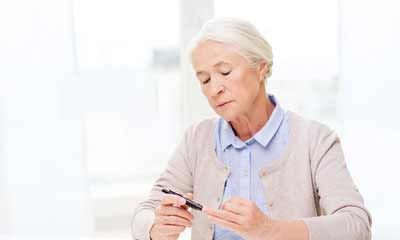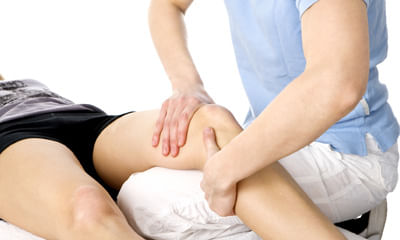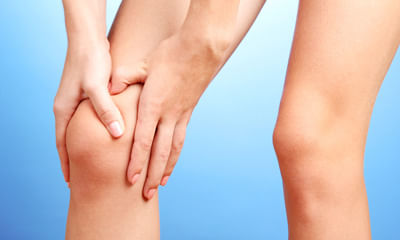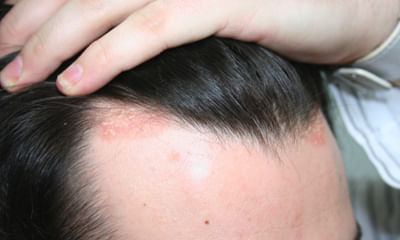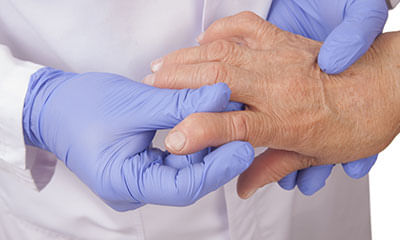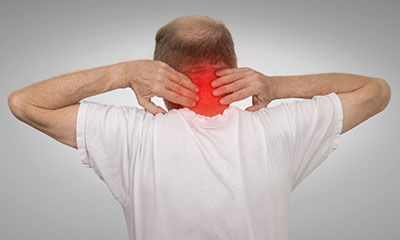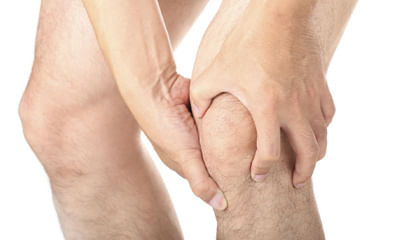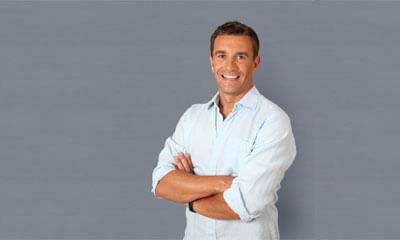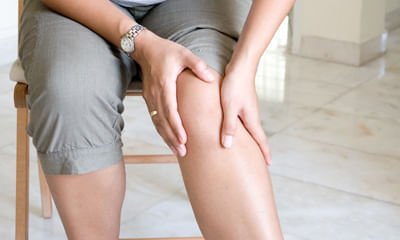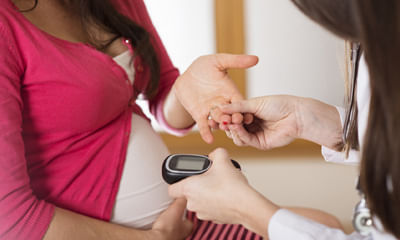Total Knee Replacement Physiotherapy
Doctor my mother has osteoarthritis is it curable its in initial stage is it curable and may I know how long it takes to ...
Ask Free Question
Symptoms of arthritis symptoms of osteoarthritis may include joint pain and progressive stiffness that develops gradually. Symptoms of may include painful swelling, inflammation, and stiffness in the fingers, arms, legs, and wrists occurring in the same joints on both sides of the body, especially upon waking up in the morning. Knee arthritis can be painful and debilitating. For osteoarthritis (oa) of the knee, self-care early on can often help significantly. It is important to stretch and strengthen the surrounding leg muscles to provide more support and reduce stresses around the joint. The following best bet exercises will help you get started on your path to feeling stronger, more flexible and more active. Remember: exercise should not be painful – if you experience pain, discontinue and consult with your physician. Advice: 1.must take adequate rest 2.apply hot water with mild heat with cotton towel 3.avoid cross leg sitting and long time standing 4. Put the small size chair under the ankle during sitting in the chair for leg elevation 5.do the exercise given below 2 times per day 1.quadriceps setting exercise helps to strengthen the quadriceps muscle (the big muscle on the front of the thigh), an important stabilizer of the knee. Lie on your back with the leg you want to exercise straight. Place a small rolled towel underneath the knee. Slowly tighten the muscle on top of the thigh (quadriceps) and push the back of the knee down into the rolled towel. Hold contraction for 5 seconds and then slowly release, resting 5 seconds between each contraction. Perform 3 sets of 10 repetitions, 1 time daily. 2.straight leg raise also helps to strengthen the quadriceps muscle. Lie on your back with the leg you want to exercise straight. The other knee should be bent to support your lower back. Tighten the muscle on the top of your thigh and lift to the level of your other knee. Slowly lower. Perform 3 sets of 10 repetitions, 1 time daily. Knee pain •patellar tendinitis: •risk factor •a combination of factors may contribute to the development of patellar tendinitis, including: •physical activity. •running and jumping are most commonly associated with patellar tendinitis. Sudden increases in how hard or how often you engage in the activity also add stress to the tendon, as can changing your running shoes. •tight leg muscles. Tight thigh muscles (quadriceps) and hamstrings, which run up the back of your thighs, can increase strain on your patellar tendon. •muscular imbalance. •if some muscles in your legs are much stronger than others, the stronger muscles could pull harder on your patellar tendon. This uneven pull could cause tendinitis. •chronic illness. •some illnesses disrupt blood flow to the knee, which weakens the tendon. Examples include kidney failure, autoimmune diseases such as lupus or rheumatoid arthritis and metabolic diseases such as diabetes. •complications •if you try to work through your pain, ignoring your body's warning signs, you could cause increasingly larger tears in the patellar tendon. Knee pain and reduced function can persist if you don't tend to the problem, and you may progress to the more serious patellar tendinopathy. •prevention •to reduce your risk of developing patellar tendinitis, take these steps: •don't play through pain. As soon as you notice exercise-related knee pain, ice the area and rest. Until your knee is pain-free, avoid activities that put stress on your patellar tendon. •strengthen your muscles. Strong thigh muscles are better able to handle the stresses that can cause patellar tendinitis. Eccentric exercises, which involve lowering your leg very slowly after extending your knee, are particularly helpful. •improve your technique. To be sure you're using your body correctly, consider taking lessons or getting professional instructions when starting a new sport or using exercise equipment. •therapy •a variety of physical therapy techniques can help reduce the symptoms associated with patellar tendinitis, including: •patellar tendon strap. A strap that applies pressure to your patellar tendon can help to distribute force away from the tendon and direct it through the strap instead. This may help relieve pain. •iontophoresis. This therapy involves spreading a corticosteroid medicine on your skin and then using a device that delivers a low electrical charge to push the medication through your skin. •platelet-rich plasma injection. This type of injection has been tried in some people with chronic patellar tendon problems. Studies are ongoing. It is hoped the injections might promote new tissue formation and help heal tendon damage. •probably your stamina would've gone down due to over use of the joints and the metabolic activity is more due to running. You need to consume good protein diet so that your body will act as a reservoir. It will help you to fight against rather than affecting one particular area of your body for eg. Knee joint. For knee ligament pain or inflammation you need to keep ice which will help you to prevent the inflammation progressing further. •patellofemoral pain syndrome •usually fully relieved with simple measures or physical therapy. It may recur, however, if you do not make adjustments to your training routine or activity level. It is essential to maintain appropriate conditioning of the muscles around the knee, particularly the quadriceps and the hamstrings. •there are additional steps that you can take to prevent recurrence of patellofemoral •they include: •wearing shoes appropriate to your activities •warming up thoroughly before physical activity •incorporating stretching and flexibility exercises for the quadriceps and hamstrings into your warm-up routine, and stretching after physical activity •increasing training gradually •reducing any activity that has hurt your knees in the past •maintaining a healthy body weight to avoid overstressing your knees •joints, ie. In the upper limbs if the pain is present in the fingers/wrist and in the lower limbs it the pain is present in the toes/ ankle, then we shall definitely say it is rheumatic arthritis. •if your proximal joints (ie. Shoulder, hip & knee has pain) then you can pour hot (warm) water in that area to reduce the inflammation. If you have pain in the distal joints ie. Wrist, fingers, ankle, toes then you can wear either elbow brace or wrist brace which will help you to feel warm and very protective. And also immerse the distal joints in the hot water tub which will help you to reduce the pain. •knee pain during driving or watching movie. •it might due to lack of movements in the knee while the joints are immobilized during driving and while watching movies. It is important that you need to have movements in and around the knee so that the blood flow will not be disturbed. •knee ligament laxity•if you have problem in your legs then it might be due to ligament laxity where your legs would become very weak due to the old ligament injury and that should be treated immediately. •wear knee cap so that you will feel firm while walking or climbing stairs.•this is a general strain and for this you can follow these measures: one keep a pillow right under the knee while sleeping, next is you can keep ice in the painful area for about 5--10 minutes, if pain still persists you can stretch your body by twisting the waist on both sides how we used to do in the school drill similarly you can try! one time you can do hot water fermentation that would help to reduce the muscle strain. •legs becoming numb and also pain is there when the patient walks for 10-15 minutes?•it looks like you are anaemic. If you feel that the legs are becoming numb then keep your legs warm which is important, probably you can wear mcr chappals inside the house/ socks inside the house. Put a door mat when ever you sit so that you will feel comfortable. Also pour warm water in the legs which would help you to get better circulation. •knee pain. If you are overweight, losing weight will also help to reduce pressure on your knee. Knee pain this is a general knee pain and for this you can follow these measures: one keep a pillow right under the knee while sleeping, next is you can keep ice in the painful area for about 5--10 minutes, it looks like you are is important to check that. Anaemia always leads to the symptoms of being tired and also having body pain though there may not be any pathological reasons for knee pain. With knee exercises you will definitely feel better and muscles must be strengthened .•don't play through pain. As soon as you notice exercise-related knee pain, ice the area and rest. Until your knee is pain-free, avoid activities that put stress on your patellar tendon. •strengthen your muscles. Strong thigh muscles are better able to handle the stresses that can cause patellar tendinitis. Eccentric exercises, which involve lowering your leg very slowly after extending your knee, are particularly helpful. •improve your technique. To be sure you're using your body correctly, consider taking lessons or getting professional instructions when starting a new sport or using exercise equipment. •therapy •a variety of physical therapy techniques can help reduce the symptoms associated with patellar tendinitis, includingback pain it looks like you are anaemic. If you have back pain after you sit for long hours then it is due to your haemoglobin levels as it is important to check that. Anaemia always leads to the symptoms of being tired and also having back / leg pain though there may not be any pathological reasons for back pain. It looks like you are anaemic. And also you have to check with your vitamin and calcium, if the bones are weak then automatically the pain gets triggered more as there is less severity of the painbe strengthened 1.resisted terminal knee extension: make a loop with a piece of elastic tubing by tying a knot in both ends. Close the knot in a door at knee height. Step into the loop with your injured leg so the tubing is around the back of your knee. Lift the other foot off the ground and hold onto a chair for balance, if needed. Bend the knee with tubing about 45 degrees. Slowly straighten your leg, keeping your thigh muscle tight as you do this. Repeat 15 times. Do 2 sets of 15. If you need an easier way to do this, stand on both legs for better support while you do the exercise. 2•standing calf stretch: stand facing a wall with your hands on the wall at about eye level. Keep as arthritis is very common that you get generally bilaterally. Ice therapy would definitely help to reduce the inflammation. We also advise you to use knee cap which would help to prevent the knee from damaging further and also to maintain the quadriceps muscle tone •stretching exercises. Regular, steady stretching exercises can reduce muscle spasm and help lengthen the muscle-tendon unit. Don't bounce during your stretch. 3•strengthening exercises. Weak thigh muscles contribute to the strain on your patellar tendon. Exercises that involve lowering your leg very slowly after extending it can be particularly helpful, as can exercises that strengthen all of the leg muscles in combination, such as a leg press.•this is a general knee pain and for this you can follow these measures: one keep a pillow right under the knee while sleeping, next is you can keep ice in the painful area for about 5--10 minutes, it looks like you are is important to check that. Anaemia always leads to the symptoms of being tired and also having body pain though there may not be any pathological reasons for knee pain. With knee exercises you will definitely feel better and muscles must be strengthened.
Hello doctors my mother has gap in her knees and we wanted to fill the gap and they suggested durolane injection cost of ...
Ask Free Question
No injection can increase the gap durolane is hyaluronic acid which may help by lubrication and shock absorption, reduce friction and further damage of articular cartilage of knee, but the effect is uncertain, and yes to some extent you may get pain relief ,but be prepared that injection effect may be minimal or effect may last upto years too, it is usually a trial type before going to final knee replacement, if your knees are badly osteoarthritic and painful, the injection effect may be next to nil.
My mother around 70 years old, suffering body pain and joint pain from long time. Recently is increasing, some time knee ...
Ask Free Question
1. START WITH PHYSIOTHERAPY TREATMENT FOR BACK AND SHOULDER PAIN 2. DO HOT FERMENTATION TWICE A DAY 3. USE LUMBER SPINE BELT 4. WEAR KNEE CAP 5. START WITH SPINAL AND SHOULDER EXERCISE AFTER PHYSIOTHERAPY SESSION 6. TAKE CALCIUM 7. TAKE VITAMIN D 8. WEAR SPORTS SHOES 9. DRINK 2 GLASS OF MILK EVERYDAY
I'm 52 years old male. I'm detected psoriasis 22 years ago. Initially I was having a scaly patches periodically. Subsequ ...
Ask Free Question
Physiotherapy and exercise - psoriatic arthritis therapeutic exercises therapeutic exercises are activities based on your exact needs. They are designed to reach a certain goal, eg to increase muscle strength. There are two types used for arthritis: range of motion and strengthening. Range of motion exercises help to maintain joint movement, relieve stiffness and restore flexibility. To increase or maintain range and flexibility you need to take your joints and muscles to their limits. Range of movement exercises should be carried out daily. Strengthening exercises help maintain or increase muscle strength. To strengthen a muscle you need to apply resistance to the movement. This can be done using your own body weight, weights or resistance bands. Strengthening exercises should be performed on alternate days and not when a joint is hot (feels warm when touched) and painful unless you are supervised by a physiotherapist. The following exercises are just some examples to get you started. A health professional can design a programme for your specific needs. Fingers and hands 1. Forearm supported on a table, hand relaxed over the edge. Extend the wrist and clench your fist - relax and let your hand relax. Repeat ten times. 2. Clasp your hands together and support your forearms on a table with your hands over the edge. Bend your wrist up and down. Repeat five times. 3. Forearm on a table, elbow tucked in to your side and palm turned down. Alternately, turn your palm to face up, then down, keeping elbow still. Repeat ten times. 4. Elbow on table with hand up. Straighten your fingers out then bend them to touch your fingertips to the base of your fingers. Repeat ten times. 5. Palm on table. Lift each finger individually off the table. Repeat five times. 6. Elbow on table with hand up. Bring the tip of the thumb to the tip of the little finger, repeat to other fingers in sequence. Repeat five times. Neck and back for the first three exercises sit up straight in a supportive chair, ie one with back support. 1. Tilt your head towards one shoulder until you feel the stretch on the opposite side. Hold for approximately five seconds. Repeat to the other side. 2. Turn your head to one side until you feel the stretch. Hold for approximately five seconds. Repeat to the other side. Repeat five times to each side. 3. Pull your chin in, keeping your neck and back straight (not tipping your head forwards). Hold at the end position and feel the stretch in your neck. Repeat five times. 4. Lie on your back with your hands on your stomach, legs bent at the knee, feet flat on the bed or floor. Tighten your stomach muscles to flatten your lower back against the bed. Hold for five seconds, repeat ten times. 5. Lie on your back as with the previous exercise. Keeping your shoulders down flat, slowly roll your knees from side to side. Hold for five seconds, repeat ten times. 6. Lie on your back as before. Push down through your heels to lift your bottom and lower back off the bed. Hold for five seconds, repeat ten times. Feet and toes 1. Press your toes down and shorten your foot by pulling up the arch on the inside of the foot. Repeat on the other foot. 2. Lie with your legs out straight and pull your feet up, then push your feet down. Repeat ten times. 3. Wiggle your toes. Repeat ten times. 4. Circle your feet around one way, then the other way. Repeat ten times. Hips and knees 1. Lie face down with both legs outstretched for five minutes. Then gently bend each knee to its limit, then relax with your legs straight. Repeat five times with a 30-second break. 2. Sit with your legs outstretched on a firm bed. Press each knee down onto the bed to straighten it. Hold for five seconds. Relax. Repeat five times. 3. Lie on your back with your knees bent up and feet flat on bed. Bend each knee in turn up to meet your stomach, straighten and lower to the bed. Repeat five times. Jaw gently open the mouth to its full width. Stretch a little and hold for five seconds. Then close your mouth completely. Repeat five times. Recreational exercise this type of exercise includes any form of movement or relaxation that refreshes the body and mind. Recreational exercises or activities improve your fitness and help maintain or improve joint range of motion and muscle strength. They add to a therapeutic programme but do not replace it. •swimming is a good all-round exercise that does not stress your joints. Psoriasis is not generally affected by the chlorine in swimming pool water, but if you find it becomes itchy when dry, apply some barrier cream before you swim and after your shower at the end. •walking is another good way of exercising. If your arthritis affects your feet make sure you wear a wellfitting pair of shoes, and insoles if they have been prescribed for you. •cycling can be an alternative to walking and is often more comfortable on the feet. •activities such as yoga, pilates and other complementary therapies may be beneficial for people with arthritis. Contact your local council offices or community centres for further information and details of classes or events.
My mother have rheumatoid arthritis since 5 year. Now she get unbearable join pain. In last 6 month she has medical hist ...
Ask Free Question
The "normal" range (or negative test result) for rheumatoid factor is less than 14 iu/ml. Any result with values 14 iu/ml or above is considered abnormally high, elevated, or positive. Treatmentthere is no cure for rheumatoid arthritis. But clinical studies indicate that remission of symptoms is more likely when treatment begins early with medications known as disease-modifying antirheumatic drugs (dmards). Medicationsthe types of medications recommended by your doctor will depend on the severity of your symptoms and how long you've had rheumatoid arthritis. •nsaids. Nonsteroidal anti-inflammatory drugs (nsaids) can relieve pain and reduce inflammation. Over-the-counter nsaids include ibuprofen (advil, motrin ib) and naproxen sodium (aleve). Stronger nsaids are available by prescription. Side effects may include stomach irritation, heart problems and kidney damage. •steroids. Corticosteroid medications, such as prednisone, reduce inflammation and pain and slow joint damage. Side effects may include thinning of bones, weight gain and diabetes. Doctors often prescribe a corticosteroid to relieve acute symptoms, with the goal of gradually tapering off the medication. •disease-modifying antirheumatic drugs (dmards). These drugs can slow the progression of rheumatoid arthritis and save the joints and other tissues from permanent damage. Common dmards include methotrexate (trexall, otrexup, others), leflunomide (arava), hydroxychloroquine (plaquenil) and sulfasalazine (azulfidine). Side effects vary but may include liver damage, bone marrow suppression and severe lung infections. •biologic agents. Also known as biologic response modifiers, this newer class of dmards includes abatacept (orencia), adalimumab (humira), anakinra (kineret), baricitinib (olumiant), certolizumab (cimzia), etanercept (enbrel), golimumab (simponi), infliximab (remicade), rituximab (rituxan), sarilumab (kevzara), tocilizumab (actemra) and tofacitinib (xeljanz). These drugs can target parts of the immune system that trigger inflammation that causes joint and tissue damage. These types of drugs also increase the risk of infections. In people with rheumatoid arthritis, higher doses of tofacitinib can increase the risk of blood clots in the lungs. Biologic dmards are usually most effective when paired with a nonbiologic dmard, such as methotrexate. Therapy your doctor may send you to a physical or occupational therapist who can teach you exercises to help keep your joints flexible. The therapist may also suggest new ways to do daily tasks, which will be easier on your joints. For example, you may want to pick up an object using your forearms. Assistive devices can make it easier to avoid stressing your painful joints. For instance, a kitchen knife equipped with a hand grip helps protect your finger and wrist joints. Certain tools, such as buttonhooks, can make it easier to get dressed. Catalogs and medical supply stores are good places to look for ideas. Surgeryif medications fail to prevent or slow joint damage, you and your doctor may consider surgery to repair damaged joints. Surgery may help restore your ability to use your joint. It can also reduce pain and improve function. Rheumatoid arthritis surgery may involve one or more of the following procedures: •synovectomy. Surgery to remove the inflamed lining of the joint (synovium) can be performed on knees, elbows, wrists, fingers and hips. •tendon repair. Inflammation and joint damage may cause tendons around your joint to loosen or rupture. Your surgeon may be able to repair the tendons around your joint. •joint fusion. Surgically fusing a joint may be recommended to stabilize or realign a joint and for pain relief when a joint replacement isn't an option. •total joint replacement. During joint replacement surgery, your surgeon removes the damaged parts of your joint and inserts a prosthesis made of metal and plastic. Surgery carries a risk of bleeding, infection and pain. Discuss the benefits and risks with your doctor. Rheumatoid arthritis multiple joint pains / early morning painit is called as rheumatic arthritis. Treatment goals •to protect the joint from further damages. •provide pin relief. •prevent deformity and disabilities. •increase functional capacity. •improve flexibility and strength. •encourage regular exercise. •improve general fitness. Physiotherapy modalities - hot/cold applications- electrical stimulation- hydrotherapy and spa therapy rehabilitation treatment technique - rest and splinting - compression gloves - assistive devices and adaptive equipment - massage therapy - therapeutic exercise - patient education assistive devices and adaptive equipment occupational therapy improves functional ability in patients with ra. Occupational therapy interventions such as assistive devices and adaptive equipments have beneficial effects on joint protection and energy conservation in arthritic patients.Assistive devices are used in order to reduce functional deficits, to diminish pain, and to keep patients' independence and self-efficiency. Loading over the hip joint may be reduced by 50% by holding a cane. In fact, most of these instruments are originally designed for patients with neurologic deficits; therefore, certain adaptations may be needed for them to be used in patients with arthritis. Elevated toilet seats, widened gripping handles, arrangements related with bathrooms, etc. Might all facilitate the daily life. The procedures needed to increase compliance of the patient with the environment and to increase functional independence are +mainly determined by the occupational therapist. Massage therapy that improves flexibility, enhances a feeling of connection with other treatment modalities, improves general well being, and can help to diminish swelling of inflamed joints. Massage is found to be effective on depression, anxiety, mood, and pain. Therapeutic exercise every joint should be moved in the rom at least once per day in order to prevent contracture. In the case of acutely inflamed joints, isometric exercises provide adequate muscle tone without exacerbation of clinical disease activity. Moderate contractures should be held for 6 seconds and repeated 5–10 times each day. Dynamic exercise therapy in improving joint mobility, muscle strength, aerobic capacity and daily functioning in patients with rheumatoid arthritis (ra). Finally, in chronic stage with inactive arthritis, conditioning exercises such as swimming, walking, and cycling with adequate resting periods are recommended. They increase muscle endurance and aerobic capacity and improve functions of the patient in general, and they also make the patient feel better. It might be due to lack of blood circulation which is the reason for you to have scrotum pain / back pain. You have to do basic aerobic exercises for you to become fit and also to maintain the blood circulation and tone. Patient education in patients with ra, sociopsychological factors affecting the disease process such as poor social relations, disturbance of communication with the environment, and unhappiness and depression at work are commonly encountered. The treatment of rheumatic diseases should provide education and information to their patients about their condition and the various physical therapy and rehabilitative options that are available to improve their quality of life. Passive treatments for rheumatoid arthritis •cold therapy reduces circulation, which ultimately decreases swelling. For example, a cold compress may be placed on the painful area. •cold therapy in acute phase •dosage 10-20mints/1-2 times a day. •heat therapy eases muscle tension and gets blood to flow more quickly to the painful area. For example, a moist, warm cloth may be used to promote circulation. •heat therapy in chronic phase •dosage 20-30mints/1-2 times a day. •hydrotherapy involves reducing your ra-related pain and other symptoms with water. With hydrotherapy, you will be submerged in warm water to relieve your symptoms. •massage can help reduce muscle tension and promote good circulation. It's also a fantastic way to help you manage stress (especially important for people with rheumatoid arthritis). •transcutaneous electrical nerve stimulation (tens) works by blocking pain signals from getting to your spinal cord. It also helps decrease muscle spasms. •tens short term pain relief (6 to 18 hrs) •ultrasound creates warmth using sound waves, whichenchanes circulation and decreases joint pain, inflammation, and stiffness. Exercise for acute phase: •preformed exercise at least once a day. •general assisted movement through normal range (joint mobilisation). •isometric-“static movements” helps to maintain muscle tone without increasing inflammation. Exercise for the chronic phase: •can progress the above exercise to include use of light resistance. •postural/core stability exercises. •swimming/walking/cycling to maintain cardiovascular fitness. •gentle stretch for areas that become tight, such as knees &calves. Regular exercises: •maintaing muscle strength is important for joint stability & preventing injury. •muscles can become weak following reduced activity. •pain signals from yours nerves and swelling can both inhibits muscles. •muscle length can be affected by prolonged positions immobilization and tightness can limit daily activities. Alternative therapies: •thi chi. •musical therapy. •yoga therapy. •relaxation techniques. •pilates. Active treatments for rheumatoid arthritis •flexibility and strengthening exercises improve your range of motion and help you build muscle strength. Yoga and pilates are flexibility and strengthening exercises. •low-impact aerobic exercise is gentle but effective at helping you manage rheumatoid arthritis symptoms. Light walking is an example of this type of exercise. Your physical therapist will let you know how often to do these exercises. For example, you may need to do a few specific exercises 3 times a day, or your physical therapist may recommend a routine that incorporates 30 minutes of low-impact aerobic exercise a day and 30 minutes of strengthening exercises every other day. If your pain is more in the proximal joints, ie.in the upper limbs if the pain is present in the fingers/wrist and in the lower limbs it the pain is present in the toes/ ankle, then we shall definitely say it is rheumatic arthritis. Wear elbow brace and wrist brace which will make her to feel warm and that will make the joints become firm. Hot water fermentation will helpknee cap will also help to prevent the damaged cartilagesif your pain is more in the distal joints, ie. In the upper limbs if the pain is present in the fingers/wrist and in the lower limbs it the pain is present in the toes/ ankle, then we shall definitely say it is rheumatic arthritis. If your proximal joints (ie. Shoulder, hip & knee has pain) then you can pour hot (warm) water in that area to reduce the inflammation. If you have pain in the distal joints ie. Wrist, fingers, ankle, toes then you can wear either elbow brace or wrist brace which will help you to feel warm and very protective. And also immerse the distal joints in the hot water tub which will help you to reduce the pain. Knee pain during driving or watching movie. It might due to lack of movements in the knee while the joints are immobilized during driving and while watching movies. It is important that you need to have movements in and around the knee so that the blood flow will not be disturbed.
I am suffering from enclosing spondylitis my left hip joint is fused. I can't walk its very painful situation doctor sai ...
Ask Free Question
HI mohit ankylosing spondylitis is an irrervisible process but with Pemf therapy we can slow down the progression and severity of the disease by which you can lead pain free life without any side effects like pain killer. plus physiotherapy will helps a lot in yours case. Thank you
Hello doctors. My question is to homeopathic doctor. My dad is having osteoarthritis in knee. Allopathic doctor has sugg ...
Ask Free Question
Yes there is treatment in Homeopathy for Osteoarthritis and it takes time to normalise thing ....which could be anything from 6 months to 1 year ( depending on the condition how fast his body response to our treatment).
Hello Dr. Thanks for giving us the opportunity to share our health issue with you, please let me state the problem from ...
Ask Free Question
Hello, in fourth degree injury no injection give any relived. Truly speaking I am suffering from just similar complaints. Exactly same. So my doctor advice physiotherapy to strength the thigh muscles. Igot lot of relief. But knee to replace is sure shot. Yet we could not make it. N unable to go for physiotherapy. So don't believe on any inj results high or low price. Only pain killer till you arrange knee replacement.
I am a patient of osteo arthritis. Doctor suggested me knee replacement surgery and prescribed medicines temporarily for ...
Ask Free Question
Hi You can use medications for sometime only , as long as it helps you temporarily. You can try other modalities like Physio, injections to knee . These might help you in long run If u r arthritis is severe degree- only replacement is only option.
My mother 77 years old, 65 kg, 148 cm suffering from osteo arthritis for last several years. She takes sufficient vitami ...
Ask Free Question
At advance stage of arthritis none of the medicines and supplement you are giving is going to work. Knee replacement in today era has wonderful result. I have been doing replacement for last 10 years and must have replaced more than 5000 knees. If she is so disabled get your mothers knee replaced.

